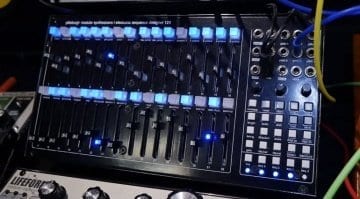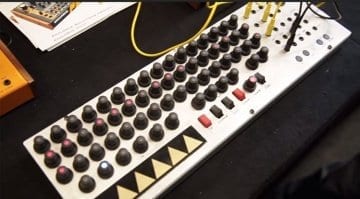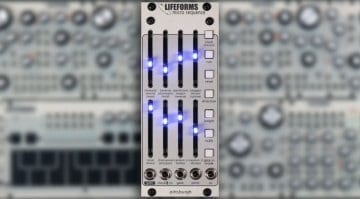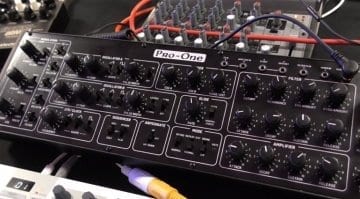Superbooth 2018: Pittsburgh Modular Electronic Sequencer Designer in action
We caught some of the details of Pittsburgh Electronic Sequence Designer in the run-up to Superbooth but now we can see it in action.
Electronic Sequence Designer 128
As well as being a smart looking standalone sequencer it’s also the same size as their Lifeforms SV-1, which means that it is totally rackable which seems quite remarkable. It has MIDI in/out as well as 4 lots of CV/Gate to run the 4 channels of analogue sequencing. Each channel can run up to 32 steps.
One really interesting feature is that in “Performance Mode” the 32 LED sliders can be carved up to represent each channel in different sections of 8 or 16. So you could run 4 channels of 8 steps and see all 4 sequences running live in a quarter of the interface. Or have one sequence of 16 and 2 of 8. This avoids the common problem of using one set of sliders for multiple functions. Obviously, if you are running 4 sequences of 32 steps then you are only going to be able to work with one sequence at a time in what they call “Page Mode”.
You can switch between different modes very quickly and easily without the sequencer missing a beat. You can save 32 groups of 4 sets of patterns. This again runs into the situation where the sliders are necessarily showing you what’s actually happening. Pittsburgh have designed in a “Live” button which pulls whatever you’ve got selected back onto the front panel. When you have multiple sequences on one page in performance mode then it’s always live and the sliders directly effect the set parameters.
Sequence effects
When the sequence isn’t running you can move sliders and hear the pitch change. In this way you can step program an entire sequence. The buttons along the top turn the steps on and off and you can also dial in an algorithm to set up a rhythm pattern. Scales are built in and accessible from the buttons along the top. You can also program in two of your own scales. The sliders are also scalable between 1 and 5 octaves.
The Sequencer can run forward, back, stagger, skipper step, pendulum. In Transpose mode it will use one sequence to transpose the notes of another sequence. So after one pass of notes the transpose sequence moves on the next note, so each pass is transposed rather than each note. Clock division is all independent.
There’s tons of stuff in here. Note shifting, swing, gate length, racheting, repeat and all sorts. It’s quite an amazing machine with loads of scope and an approach that tickles me in a way that something like the BeatStep Pro really doesn’t. Too big for my rack though – it would have to be standalone and it’s the sort of unit that would work very well that way.
The Electronic Sequence Designer 128 is about ready to go and we should see it in July. Price is yet to be determined.
More information
- Pittsburgh Modular website.
Video
You are currently viewing a placeholder content from YouTube. To access the actual content, click the button below. Please note that doing so will share data with third-party providers.









